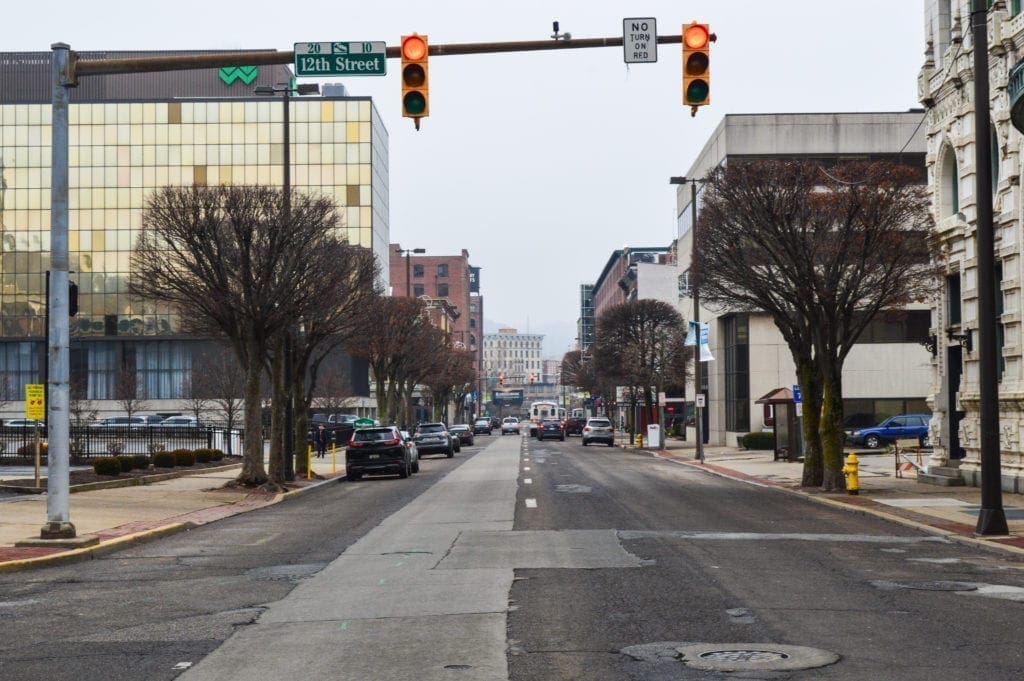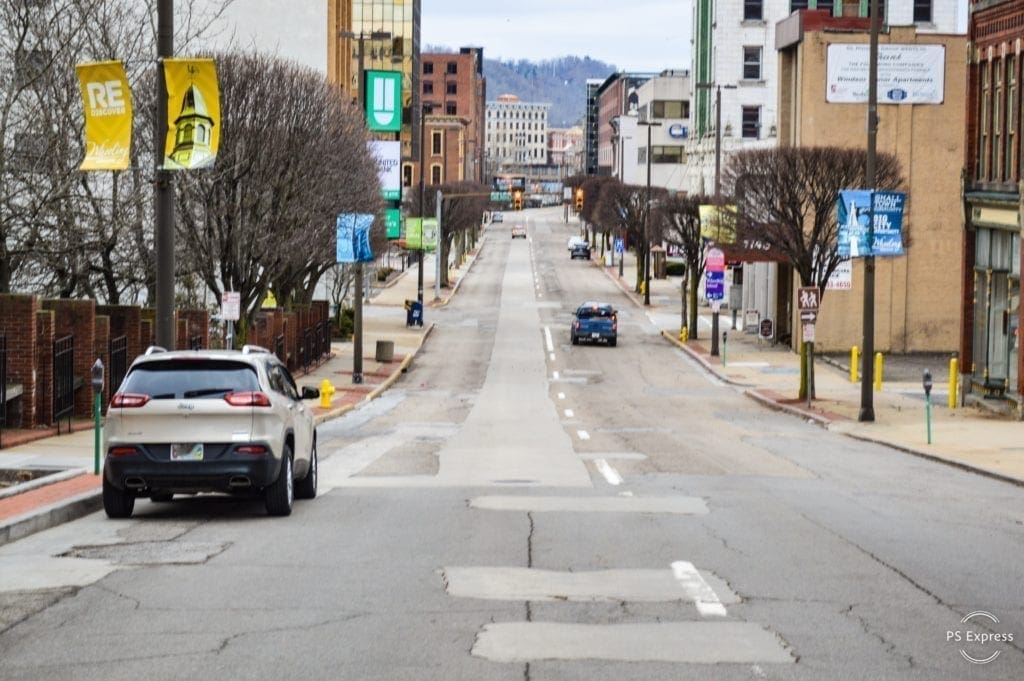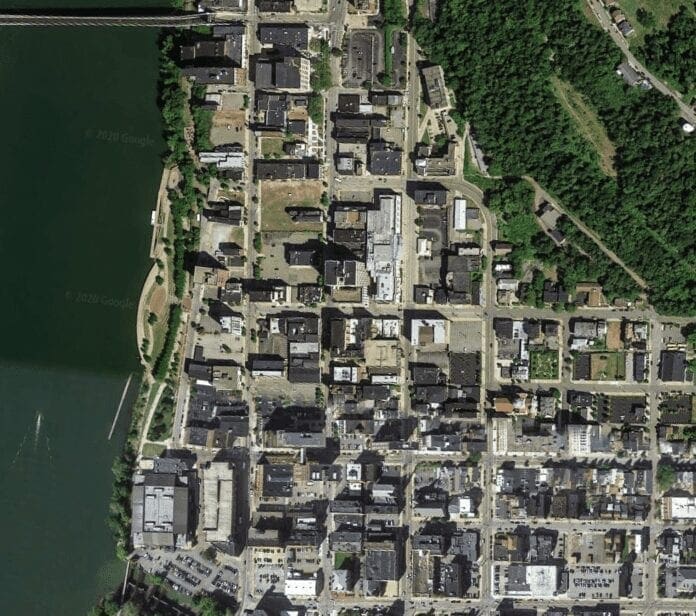It was late 2015 when a beautification project for several downtown Wheeling streets, access ramps, and sidewalks was initially introduced to taxpayers, but now the completion date is three years away.
Several factors, according to Wheeling City Manager Bob Herron, played into the delay, including underground infrastructure needs, the presence of storage vaults under most sidewalks, and the upgrading of turning radiuses at a pair of downtown intersections.
“It was supposed to start this year, but then the scope would have been reduced,” Herron said. “But now, this is a massive project that is very complicated for a lot of different reasons. This is not an easy project.
“But, finally, we are nearing the end of the engineering of it all, and that is on schedule to be complete by July and sent to Charleston for final approval,” the city manager reported. “It was a project that was long overdue for the downtown, but when we dug, we realized there was a lot more to accomplish than just the paving, the signals, and the sidewalks. We found that there was a lot of work to do under the roads while we separated the sewers for the Health Plan, and no one would want to see those streets paved only to have to dig them up again because of a water main break.”

Debate and Denials
The partnership between the city of Wheeling and the state Division of Highways was denied the last two years for a pair of federal BUILD grants that would have filled the funding gap for the Wheeling streetscape project. The $10 million has since been committed by the governor’s office.
Plus, in late 2017 and early 2018, a city proposal concerning a proposed change in traffic patterns along Main and Market streets was introduced, one that would have changed one-way traffic on Main and Market streets in favor of two-way. Mayor Glenn Elliott and a few council members were in favor, but hundreds of residents signed petitions in opposition, and the Wheeling Chamber of Commerce released an opposing statement, as well, in early June 2018.
“That statement was released after a meeting of our executive board, and those business leaders were strongly opposed to the idea for several reasons,” explained Erikka Storch, president of the Wheeling Area Chamber of Commerce who also represents the Third District in the state House of Delegates. “After a few meetings with the mayor, we thought it would be dropped, so we could move on with the project, but it wasn’t dropped.
“I know our members here in downtown Wheeling were very happy when that topic did go away,” she added. “No one thought it was a good idea because of the parking, the width of the roads, and because of how busy those roads are during the day because there are more people working in downtown than ever before.”

Beginning to Now
When the city and state partnered on the project, the projected cost was about $10 million with the city financing 23 percent, but the price tag has more than doubled to $24 million because of historical surprises, ancient infrastructure, and a “oh, that’s bad” approach.
“The project has really heated up, and there has been a lot of work that has been accomplished, but what people should remember is that when it started, it was a $2.6 million paving job that would have involved the milling and the paving of Main and Market streets,” Herron said. “But one of the focuses of the Health Plan was the condition of the streets and sidewalks between 10th and 12th streets.
“One of the commitments that was made was that we would look at streetscaping that block,” he recalled. “At that time, the former mayor and council put together a request to the governor at the time, Earl Ray Tomblin, to add the sidewalks, the access ramps and the curbs. At that point, that’s when the state determined that if they did those things, they would need to do the traffic signals, too. That’s when the underground infrastructure came into play, there was a lot added there.”

The Lid Was Lifted
Performing the sewer separation from the 1100 block along Main Street to the intersection with 16th Street proved the opening of Pandora’s Box for the city’s Operations Department. Aging gas lines, severed water pipes, trolley and train tracks, and a 131-year-old water main down the center of Main Street are a few examples.
“That project was performed to make sure the sewer could handle the people inside the new Health Plan building, and not only was it a pretty challenging experience, but we also learned a lot about how this has been put together over the years,” Herron said. “It was determined then that we had to do a similar sewer separation on Market Street because we wanted to improve the intersections. Plus, the intersections at 16th and Market and 12th and Market do not have the proper turning radiuses, and in order to do that, the underground infrastructure has to be moved.
“According to state code, when you move those things, a city has to separate the sewers at the same time, and that is not unique to West Virginia. It is like that across the country,” he continued. “So, that meant we had to do a $2 million sewer separation, but that will also mean that all of the open lots and empty buildings in the downtown can be developed without any worry about how much stormwater it can handle.”
Of course, there are “pros” and “cons” to most situations, and with the streetscape, the “con” most concentrated on at this time concerns the bumpy drive along Main and Market streets, but there are long-term positives, too.
“So, a project that started as $2.6 million mill-and-fill project is now in excess of $24 million,” Herron said. “Now, I drove on Main and Market streets today, and I know they are rough. I get that, but this is going to be a great project for the downtown when it is finally complete, and that also will include the water main that will be replaced in the new future.
“That water main is from 1889, so it’s overdue to be replaced,” he said. “It’s going to take a couple of years, and we anticipate it starting in spring 2011, but when it’s completed, we will be up-to-date above and below the ground for many years to come.”


